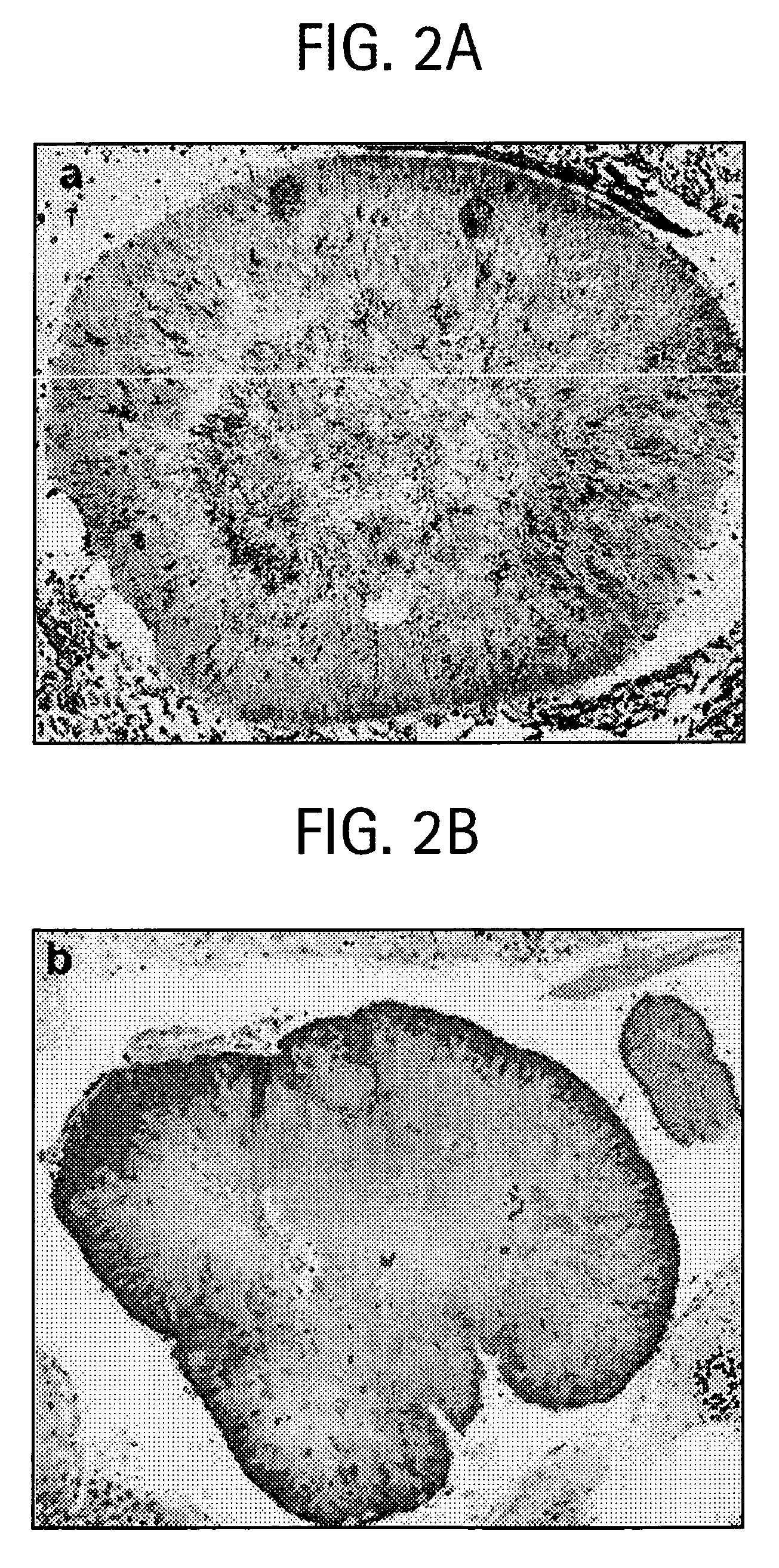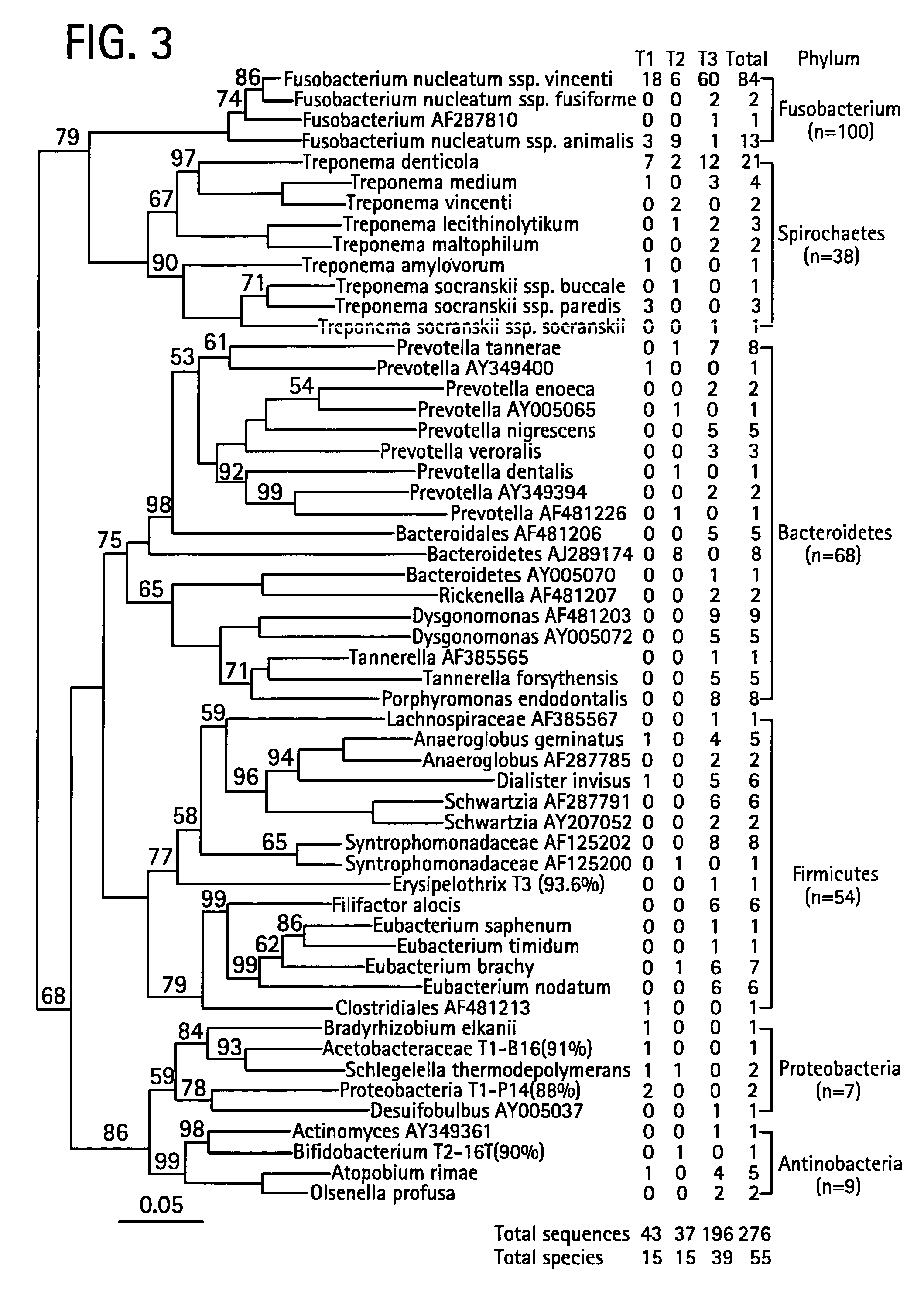Methods for diagnosing and treating chronic tonsillitis
a technology for tonsils and tonsils, applied in the field of diagnostic methods, therapeutic methods and kits for diagnosing and treating chronic adenotonsillar tonsils and adenotonsillar hypertrophy, can solve the problems of sagea having an adverse effect on learning performance in elementary school, children are in danger of being misclassified as having attention deficit hyperactivity disorder, and the effect of preventing chronic adenotonsillar hypertrophy
- Summary
- Abstract
- Description
- Claims
- Application Information
AI Technical Summary
Benefits of technology
Problems solved by technology
Method used
Image
Examples
example 1
[0057] A large percentage (1.3-61%) of CATH / T tonsils contain microscopically visible clusters of bacteria called “sulfur granules” or “Actinomyces granules”, but it was not known whether they are also present in normal tonsillar tissues.
Experimental Design and Methods:
[0058] We studied consecutive patients who underwent tonsillectomy. The inclusion criteria were patients with a clinical diagnosis of chronic tonsillitis, recurrent tonsillitis, tonsillar hypertrophy, or a combination of these diagnoses. Cases were excluded if there were recent episodes of purulent acute tonsillitis or if the tonsils were fragmented into multiple pieces, preventing accurate measurement of the dimensions of the tonsils for the estimation of tonsillar hypertrophy. Of the 290 tonsillectomy cases due to inflammatory tonsillar diseases, 16 were excluded, 5 due to fragmentation of the specimen and 11 due to recent peritonsillar abscess. Clinically, 248 patients were diagnosed as chronic tonsillitis, 2 as...
example 2
Detection Rate of “Sulfur Granules” in Adequately Sampled CATH / T Tonsils
[0062] The detection rate of “sulfur granules” may vary with the extent to which the tonsils were sampled. In a surgical pathology laboratory, it is routine to examine one section for each tonsil, as is evident in the archival material we examined.
Methods and Results:
[0063] Two tonsils were examined for each patient with CATH / T. Fresh tonsils were sectioned every 2 to 3 mm and all sections were processed for histological examination. Of the 3 cases examined, only case 1 would have been found to contain “sulfur granules” if only two sections were examined. However, when adequately sampled, “sulfur granules” were observed in all 3 cases examined, suggesting that nearly all CATH / T tonsils contain “sulfur granules” and that all CATH / T cases may have the same etiology (Table 1).
TABLE 1Detection of “sulfur granules” in adequately sampled CATH / T tonsilsNumberNumber of sectionsFalseofpositiveSensitivitynegativelyC...
example 3
Defining the Bacterial Species Composition of “Sulfur Granules” using 16S PCR-based Sequencing
[0064] The candidate antigens responsible for the B lymphocyte activation and hyperplasia are likely to be from bacteria residing in the “sulfur granules”. However, no bacterial species in the granules has been phylogenetically identified until the present study.
Methods:
[0065] Using universal 16S rDNA PCR, biopsies were examined from the tonsils of three cases of CATH / T. “Sulfur granules” were dissected from sections of formalin-fixed tonsils in two cases (T1 and T2) using microscopy and isolated from a fresh tonsil in one case (T3) under a stereomicroscope.
[0066] DNA was extracted from the “sulfur granules” using a tissue DNA extraction kit (Qiagen). To lyse bacteria, the isolated “sulfur granule” was incubated with lysozome (20 mg / ml) (Sigma) in 180 μl of buffer containing 20 mM Tris HCl, pH 8.0, 2 mM EDTA, and 1.2% Triton X-100 for 60 min at 37° C. The Qiagen tissue DNA extraction p...
PUM
| Property | Measurement | Unit |
|---|---|---|
| diameter | aaaaa | aaaaa |
| size | aaaaa | aaaaa |
| pH | aaaaa | aaaaa |
Abstract
Description
Claims
Application Information
 Login to View More
Login to View More - R&D
- Intellectual Property
- Life Sciences
- Materials
- Tech Scout
- Unparalleled Data Quality
- Higher Quality Content
- 60% Fewer Hallucinations
Browse by: Latest US Patents, China's latest patents, Technical Efficacy Thesaurus, Application Domain, Technology Topic, Popular Technical Reports.
© 2025 PatSnap. All rights reserved.Legal|Privacy policy|Modern Slavery Act Transparency Statement|Sitemap|About US| Contact US: help@patsnap.com



